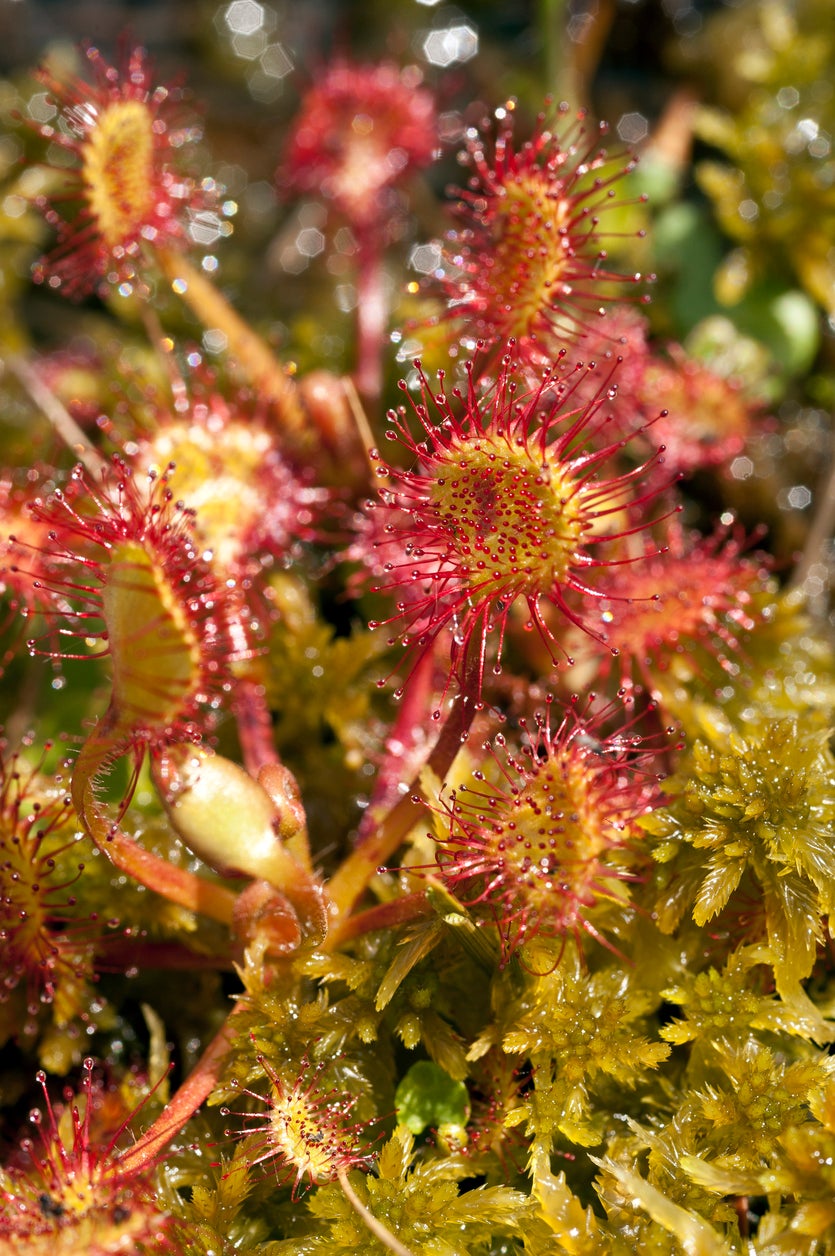Growing Sundews - Tips On How To Care For a Sundew Plant


Sundews (Drosera spp.) are carnivorous plants with an ingenious way to catch their prey. Carnivorous sundew plants have sticky pads that trap insects. The plants are also attractive, often brightly colored rosettes. Growing sundews is common in terrariums or other warm, moist areas that mimic their natural bog habitat. A few tips on how to care for a sundew will have you on your way to enjoying this fascinating plant.
Sundew Plant Information
There are over 90 species of sundew. The majority are found in Australia and South Africa, but they also grow in hot, humid areas of Georgia, Florida, and other similar climates. The plants prefer acidic soils and are usually where there is a bog or marsh and often grow on top of sphagnum moss. Sundews are in the genera Drosera and common varieties are often seen in houseplant stores. Sundew plant information wouldn't be complete without explaining the trap mechanism. The plant has tiny arms or stems covered at the tips with sticky filaments. These filaments secrete a substance that will not only catch small prey but will also digest them. The arms fold in to hold the insect for four to six days until it is completely digested.
Growing Sundews
Whether you grow them indoors or out, carnivorous sundew plants are excellent for controlling gnats and other tiny insects. Sundew plants thrive as potted plants in a mixture of sphagnum moss and vermiculite or perlite. The pot must be kept constantly moist and an atmosphere of humidity is best for maximum growth. Carnivorous sundew plants need warm temperatures and moist conditions. Outdoor plants do well when planted near a water feature or even in soggy soil. When growing sundews outdoors, till soil completely and mix in sphagnum moss to increase the acidity. Full sun situations suit the plant best, but you can also grow them in dappled light.
How to Care for a Sundew
Potted plants do not need fertilizer but do require either distilled or rainwater, as they are not tolerant of high levels of minerals. Provide a humidity level of 40 to 60 percent. This is easy to do by setting a saucer filled with small pebbles under the plant and filling it with water. The evaporation will help moisten the ambient air. Cut off spent stems and leaves as they occur. Transplant them when they outgrow their pots. There are some varieties of Drosera that are more hardy than others. Check with your extension office for plant recommendations for your area. Follow the instructions on how to care for a sundew and grow a fascinating and useful plant in the garden.
Gardening tips, videos, info and more delivered right to your inbox!
Sign up for the Gardening Know How newsletter today and receive a free copy of our e-book "How to Grow Delicious Tomatoes".

Bonnie Grant is a professional landscaper with a Certification in Urban Gardening. She has been gardening and writing for 15 years. A former professional chef, she has a passion for edible landscaping.
-
 4 Superfast Composting Methods: Turn Waste Into Garden Gold In 30 Days Or Less
4 Superfast Composting Methods: Turn Waste Into Garden Gold In 30 Days Or LessTry the fastest composting methods to turbocharge your pile and transform kitchen scraps and garden waste into finished compost in just a few weeks.
By Mary Ellen Ellis
-
 Best Spider Plant Soil – Complete Soil Guide And Expert Tips For Keeping Plants Happy
Best Spider Plant Soil – Complete Soil Guide And Expert Tips For Keeping Plants HappySpider plants are fun and easy plants to grow, but what is the best soil for a spider plant? Selecting the right soil is important so they can thrive.
By Bonnie L. Grant